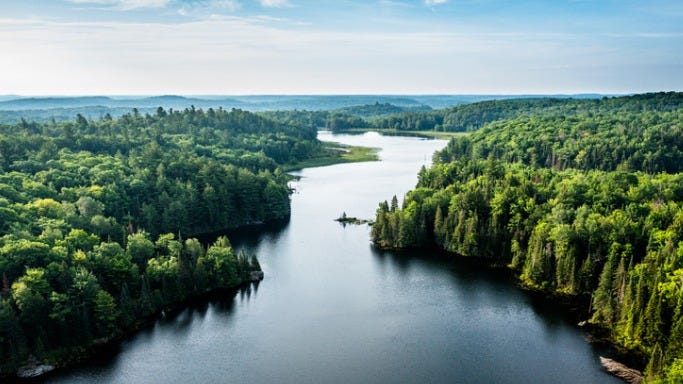Western States Stand Up to Bureau of Land Management Land Grab
Did Congress really mean for conservation to be an explicit multiple-use under FLPMA?
This month, a coalition of industrial groups sued to stop the Bureau of Land Management’s (BLM) new rule that likely blocks off access to public lands.
This is only the latest in a series of challenges to the rule spearheaded by Western states. As IWF Center for Energy and Conservation Director Gabriella Hoffman and I wrote in The Wall Street Journal in July 2023 about the proposed rule:
Under the Federal Land Policy and Management Act of 1976, Congress authorized the BLM to manage federal land under a multiple-use and sustained-yield system. This means the diverse uses of land—including mineral production, wildlife protection, oil and gas production, and grazing—would be considered together by the BLM during any federal land decisions.
The recently proposed Conservation and Landscape Health rule would establish “conservation” as a distinct use of land… The proposed rule would also establish a controversial new program that implements conservation leasing—the setting aside of land “for the purpose of pursuing ecosystem resilience through mitigation and restoration.” The BLM would issue leases to individuals, businesses, nongovernmental organizations and tribal governments to protect certain areas.
Since our 2023 op-ed, the BLM finalized its rule and it went into effect on June 10, 2024. The final rule split the proposed rule’s conservation leases into two types–mitigation and restoration leases–but the bones of the rule remain the same.
The rule defines “conservation” as one of the multiple uses permitted under FLPMA. The plaintiffs contend that “BLM has converted a statute for managing the productive use of lands into one of non-use, prioritizing conservation values above.” The lawsuit also contends that the effects of the rule are large enough that it ought to have received an environmental review under the National Environmental Policy Act (NEPA).
Foresters also worry that the rule will make it more difficult to thin overstocked forests and reduce wildfire risks. Nick Smith, public affairs director for the American Forest Resource Council, told Inside Climate News: “From the forest sector’s standpoint where BLM manages a significant amount of forests, it simply serves to add red tape and additional costs to a federal land management system that we think is broken.”
What has gotten the most attention are the mitigation and restoration leases. In a related BLM fact sheet on the rule, a solar company is eligible to apply for these leases, for example, if they promise to offset destruction of high-quality habitat by restoring nearby lower-quality habitat.
A solar energy project is proposed on public lands in an area that has wilderness and recreation values.
The environmental analysis for a proposed solar project identifies lands with wilderness characteristics in the project area, along with associated recreation values for hiking, camping, hunting, mountain biking and other activities. These impacts to wilderness and recreation resources cannot be avoided or mitigated through project design, so the BLM determines that compensatory mitigation is appropriate. The solar project developer or another entity could apply for a mitigation lease to restore or protect wilderness and recreation values in a different location for the duration of the project impacts, thereby offsetting the unavoidable impacts of the development. Existing uses on the public lands affected by the mitigation lease would continue, such as grazing and public access, and new uses could be authorized if they are consistent with the purpose of the mitigation lease.
But the rule also expands BLM’s use of Areas of Critical Environment Concern (ACEC) designations, which are “public lands where special management is needed to protect important resources and unique scenic landscapes, or to protect people and property from hazards.” The rule allows ACECs to be designated “outside of the resource [resource management] planning process” for “temporary” management at the discretion of state BLM directors. Prior to the rule, they were subject to public comments and BLM could not unilaterally begin special management.
Congress has also taken notice of BLM’s final rule. Previously, Congressional leaders deemed the rule illegal since a previous similar rule, BLM Planning 2.0 in 2017, was revoked by former President Trump. Rehashing rules in this manner is dubious under the Administrative Procedure Act. The Western Economic Security Today (WEST) Act passed the House of Representatives at the end of April.
Whether or not BLM’s rule is in violation of FLPMA is up to the lawyers to decide. But now that Chevron deference is no longer required of the courts, the time is right for a challenge.
This piece was originally published by the Independent Women’s Forum on July 31, 2024. Read it here: https://www.iwf.org/2024/07/31/western-states-stand-up-to-bureau-of-land-management-land-grab/
In Other News
Montalbano Mondays just hit 100 subscribers! Thank you for supporting my work, and please share if you’re enjoying what I do.
Read more about BLM’s land grab from Director of IWF’s Center for Energy and Conservation,
:If you missed me on the
Show last Monday about the denial of the Ambler Road and the unfolding wind turbine disaster in Nantucket, listen here:






Alas, this appears to be just another of many efforts by the current administration to take over all land management for whatever purposes they deem appropriate, as opposed to allow the people to manage land to best economic use go about their business. thanks for the update
BTW, nice post, thank you. (forgot to mention that before)